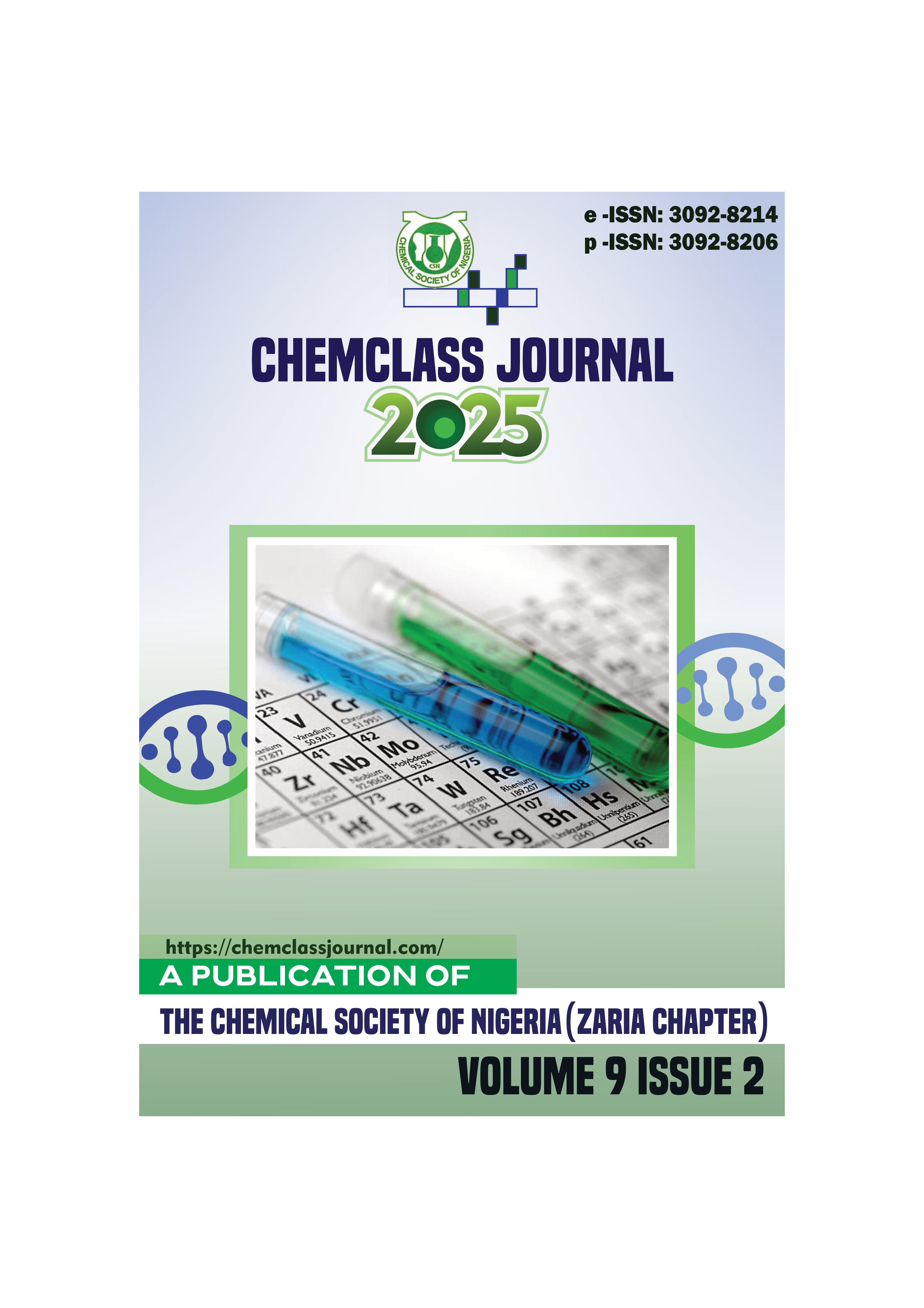Risk Assessment of Polyaromatic Hydrocarbon (PAH) in Asiko River, in Ajaokuta, Kogi State, Nigeria
DOI:
https://doi.org/10.33003/chemclass-2025-0901/148Keywords:
Flame ionization detector , Polycyclic aromatic hydrocarbons , silica gel column , solvent extraction , Water pollutionAbstract
Polyaromatic hydrocarbons (PAHs) are persistent environmental pollutants with significant health risks due
to their toxicity, carcinogenic potential, and resistance to degradation. This study assessed PAH
contamination in the Asiko River, situated in Ajaokuta, Kogi State, Nigeria, by analyzing water samples
from five designated points (S1-S5) for hydrophobic PAH concentrations. The collected water samples were
preserved in dark brown glass vials containing preservatives and transported to the laboratory. PAHs
extracts were isolated through a liquid-liquid extraction method and then the extract was subjected. The
results indicated varying PAH levels across sampling sites, with S1 recording acenaphthylene (1.28 ± 2.3 ×
10⁻⁵ mg/L), acenaphthene (2.30 ± 2.9 × 10⁻⁵ mg/L), and pyrene (2.60 ± 1.2 × 10⁻⁵ mg/L), while S2 and S3
had notable detections of naphthalene (5.445 ± 5.7 × 10⁻⁵ mg/L and 3.00 ± 2.7 × 10⁻⁵ mg/L, respectively).
S4 exhibited the highest diversity of PAHs, including naphthalene (2.28 ± 5.7 × 10⁻⁶ mg/L) and pyrene
(3.32 ± 2.9 × 10⁻⁵ mg/L), whereas S5, serving as the control, showed fluoranthene (13.70 ± 2.2 × 10⁻⁵ mg/L).
The concentrations exceeded the Agency for Toxic Substances and Disease Registry (ATSDR) permissible
level of 0.2 μg/L and the US Environmental Protection Agency (USEPA) limit of 0.1 μg/L, indicating
significant pollution. Risk assessment parameters, including average daily dose (ADD), hazard quotient
(HQ), and lifetime average daily dose (LADD), were computed following USEPA methodologies. The
ADD values for adults and children ranged from 0.39 to 0.56 and 1.20 to 2.29, respectively, while LADD
values were below the threshold of 10⁻³, suggesting no immediate health risks. The cancer risk (<10⁻⁶) and
HQ (<1) were within acceptable limits, indicating that despite contamination, local inhabitants are not
currently at high risk of carcinogenic effects. These findings underscore the necessity of stringent regulatory measures to mitigate PAH pollution and protect aquatic ecosystems and human health. Continuous
monitoring, pollution control strategies, and public awareness are recommended to reduce PAH exposure
in the Asiko River region.





 ChemClass Journal
ChemClass Journal
